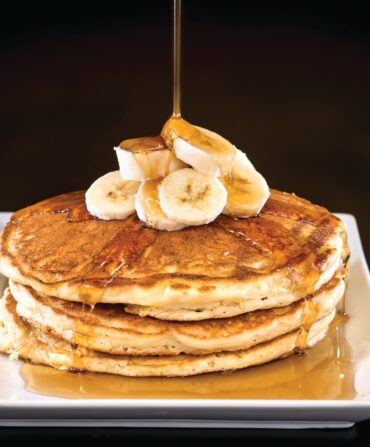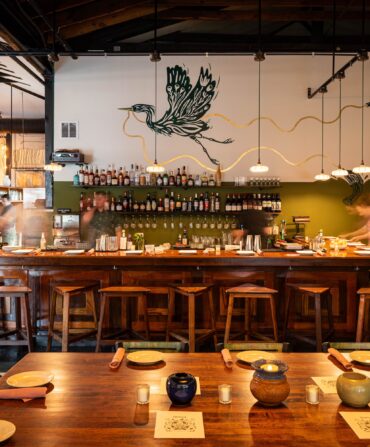My first visit to Mount Vernon wasn’t a good one. Like countless other families in the 1950s, we were participating in the required ritual known as the family vacation. As I was eight, I have few memories of it all other than the August heat of Northern Virginia. In fact, my only real memory of the visit was reinforced over the years by my parents’ retelling friends how, as we stood in line in the sweltering summer outside of our first president’s home, I turned to my dad and exclaimed, “This has to be the slowest Howard Johnson’s ever!”
For those not old enough to remember the golden age of Howard Johnson’s, I should explain that the roofs, coast to coast, of the restaurant chain were modeled after the roof of George Washington’s Mount Vernon. I guess I figured we were waiting for a table. To my disappointment, there was no clam roll to be found at the end of the line, just what seemed to be an old house full of old furniture.

A 1776 portrait of the commander-in-chief by Charles Willson Peale.
Yet, despite that rough first visit, I’ve made my way back to Mount Vernon many times since. This past spring, I was invited to be the guest of the Mount Vernon Ladies’ Association and stay “within the walls” of the estate for a few nights.
My invitation came through the efforts of Dean Norton, the estate’s director of horticulture. Among the current generation of “guardians” of the place, I can think of no better example than Norton. He came here as a teenager, and other than time out for college and his own family vacations has been here pretty much ever since. Possessed of a seemingly unending passion for Mount Vernon’s history, he spearheaded a restoration and enhancement of the gardens and grounds.
With research in hand, Norton oversaw the reconstruction of the entire Upper Garden, with its boxwood parterre in the shape of a fleur-de-lis. He knows every tree that remains from Washington’s time and cares for them with the attention one might offer a beloved elderly relative. Listening to him talk about the gardens and the old trees as we made our way over the place brought the past to life. It was as if I had won some mythical Super Tri-State History Lottery. This was no longer just some dead man’s farm.
By my second morning on the back piazza, overlooking the Potomac, I had to ask myself how I could have missed so much that first time I came to Mount Vernon.

Photo: Cameron Danielson
Presidential Pinnacle
The home’s octagonal cupola and dove of peace weather vane.
The house itself is clearly not the home of some later, nineteenth-century plutocrat. Even the grandest of rooms seems scaled for the new republic. The central passage still displays the key to the Bastille, given to Washington by Lafayette, just as Washington’s bedroom remains as it was when he died. I feel comfortable in these human-scaled rooms and passages filled with human-scaled furniture. If there are ghosts to be found at Mount Vernon, I sense they are the protective kind.
Heroes come and heroes go, but Washington remains as exceptional in our age as he was in his. Despite the flaws that came with both his humanity and his times, he set a standard that few leaders ever match. There remains the heavy stain of slavery that touched the lives of all, but even then, as Henry Wiencek has laid out in his study An Imperfect God, Washington seemed to be evolving beyond his peers.
While I am pretty sure Washington would find little joy in all the focus on him at Mount Vernon, I have to believe he would be impressed with how well it’s now presented. The orientation center and museum have replaced the “dusty attic model” of what museums of my childhood were with a model for museums to come as they tell his story through interactive exhibits and, as of this fall, a new 45,000-square-foot research library. Just as it did two hundred years ago, the estate’s reconstructed distillery now produces small batches of rye whiskey according to Washington’s own recipe.
But Mount Vernon is more than just the buildings and gardens and exhibits. It is the lifework of countless men and women like Norton who have dedicated themselves to its preservation since 1853, when Ann Pamela Cunningham of South Carolina founded the Mount Vernon Ladies’ Association after her mother wrote her, “I was painfully distressed at the ruin and desolation of the home of Washington, and the thought passed through my mind: Why was it that the women of his country did not try to keep it in repair, if the men could not do it? It does seem such a blot on our country.”
For the last 150-plus years, Mount Vernon has served pilgrims like me who want to better understand how we became us. So much of who we are as a nation was laid out on that back piazza, in those rooms, on those garden paths. In the clamor of hundreds of visiting schoolkids or in the silence that surrounds Washington’s tomb, I am reminded that all of this is now my patrimony. If what’s past is prologue, then, for me, our future began there, on that gentle rise above the Potomac.








